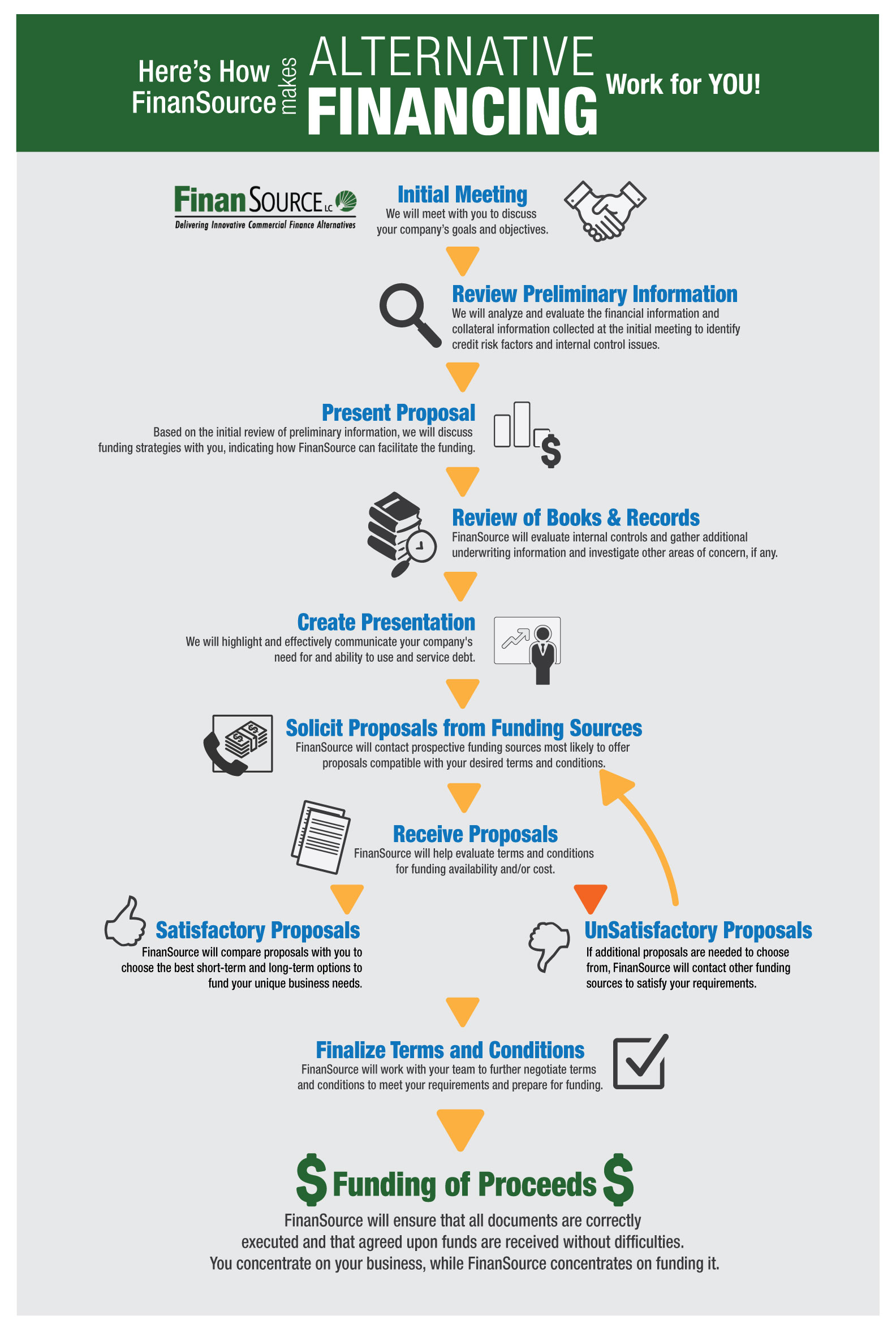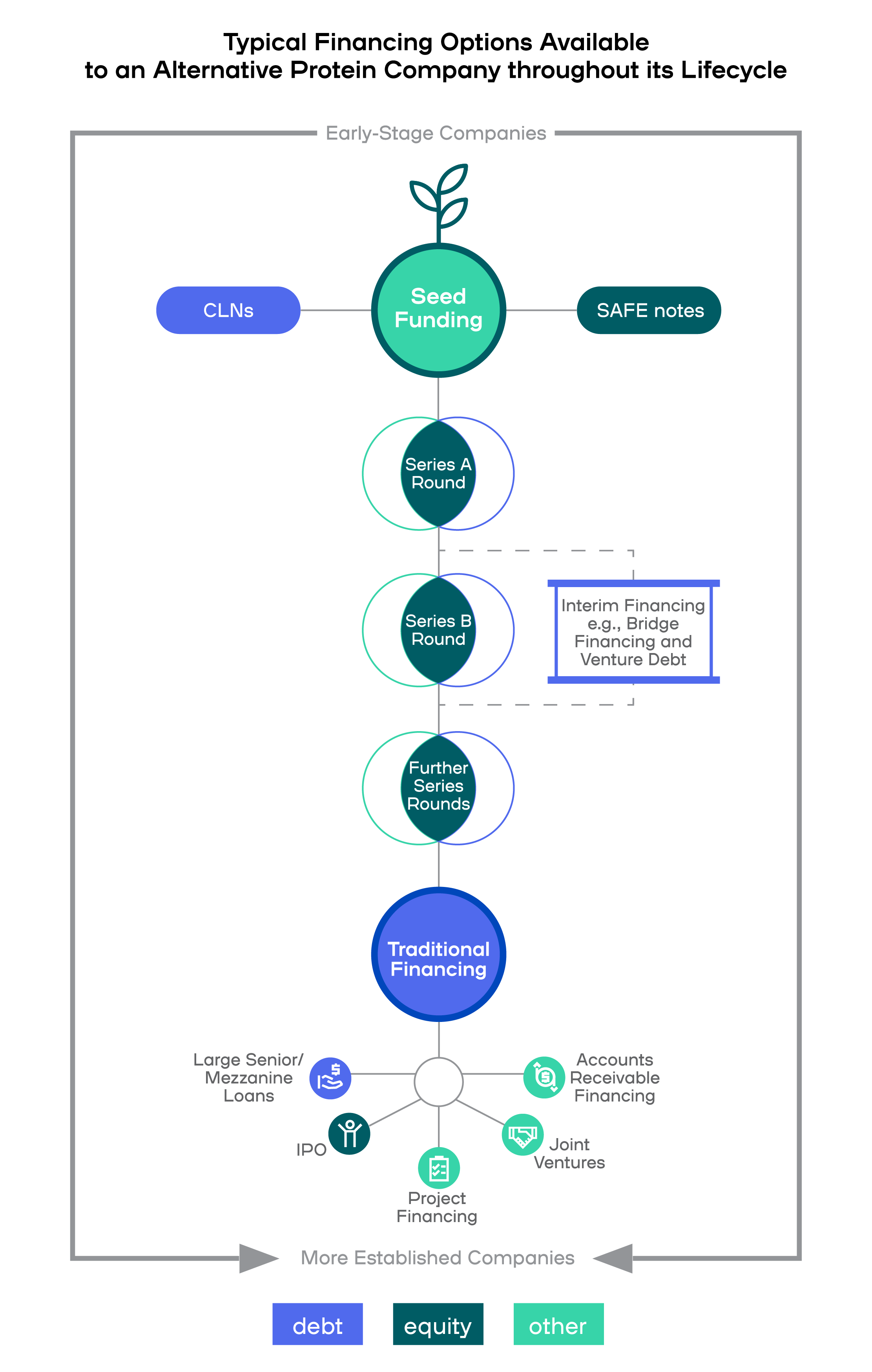Companies have various financing alternatives, including equity, debt, and hybrid financing options. Each option has its own advantages and disadvantages.
Financing is essential for companies as it contributes to their growth and sustainability. The right financing alternative can help a company access the capital needed for expansion, innovation, and day-to-day operations. We’ll explore the different types of financing options available to companies, their respective benefits and drawbacks, and the factors to consider when choosing the most suitable option for a company’s specific needs and goals.
By understanding these financing alternatives, companies can make informed decisions that align with their financial strategies and objectives.

Credit: finansourcelc.com
Exploring Financing Options
When it comes to financing a company, it’s important to explore various options to determine the best fit for your specific needs. Two common financing alternatives for companies are debt financing and equity financing. Debt financing involves borrowing money that needs to be repaid over time, while equity financing involves selling a portion of your company in exchange for funds. Let’s take a closer look at each option:
Debt financing is a popular choice for companies looking to raise capital without diluting ownership. With debt financing, companies can secure funds by borrowing from individuals, banks, or other financial institutions with the agreement to repay the borrowed amount along with interest over a specified period. This type of financing allows companies to maintain control over their operations while leveraging external funds to fuel growth.
Benefits of debt financing include:
- Retaining ownership: By opting for debt financing, companies can maintain complete ownership and control over decision-making processes.
- Tax advantages: Interest payments made on borrowed funds are often tax-deductible, reducing the overall tax burden.
- Predictable payments: Debt financing enables companies to plan repayments with a fixed schedule, making it easier to manage cash flow and budgets.
However, there are also some considerations to keep in mind:
- Interest rates: The interest rates charged for borrowing funds may vary, and companies need to carefully assess and compare rates to ensure viability.
- Collateral requirements: Some lenders may require collateral in case of default, which could put assets at risk.
- Debt burden: Taking on too much debt can limit a company’s ability to take advantage of future opportunities and may increase financial risk.
Equity financing, on the other hand, involves selling a portion of your company in exchange for funds. This option enables companies to raise capital without incurring debt or interest payments. By offering equity to investors, companies can access funds for business growth and expansion.
Here are some key benefits of equity financing:
- No repayment obligation: Unlike debt financing, equity financing does not require regular repayments, reducing financial strain.
- Shared risk: Investors who purchase equity also assume a portion of the business risk, reducing the burden on the company.
- Access to expertise: Strategic investors often bring valuable industry knowledge and expertise to the table, which can contribute to long-term success.
However, there are considerations to note:
- Diluted ownership: Selling equity means selling a portion of the company, resulting in reduced ownership and control.
- Profit sharing: Equity investors are entitled to a share of company profits, which may impact future earnings.
- Long-term commitment: Equity financing often involves forming relationships with investors and may require periodic reporting and communication.
Debt Financing
Debt financing is a crucial option for companies looking to raise capital through borrowing. It involves the use of loans or bonds to acquire funds, which are repaid with interest over a specific period. Understanding the various avenues for debt financing is essential for businesses seeking the most suitable option to meet their financial needs.
Bank Loans
Bank loans are a popular form of debt financing for companies. These loans are typically secured by the company’s assets, and the terms, interest rates, and repayment schedules vary based on the lender’s policies and the financial stability of the company. Obtaining a bank loan can provide businesses with the necessary capital to expand operations, purchase equipment, or manage cash flow, enabling them to achieve their growth objectives.
Bonds
Bonds are another viable option for debt financing. When a company issues bonds, it is essentially borrowing money from investors and promising to repay the principal amount, along with periodic interest payments. Issuing bonds can be an attractive alternative to bank loans for companies with a strong credit rating, as it allows access to a broader investor base and may offer more flexible terms compared to traditional bank financing.
Equity Financing
Equity financing is an attractive option for companies seeking long-term capital. It involves sourcing funds from investors in exchange for ownership stakes, allowing businesses to expand without taking on additional debt. This financing alternative can provide flexibility and strategic partnerships, while sharing the risk with external stakeholders.
Equity financing is a method of raising capital for a company by selling shares of the company to investors in exchange for ownership. This type of financing provides a way for business owners to raise funds without incurring debt, while also allowing investors to share in the company’s potential profits.Venture Capital
Venture capital is a form of equity financing provided to early-stage, high-potential companies with a strong growth trajectory. Venture capitalists typically invest in businesses with innovative ideas, scalability, and the potential for substantial returns. This form of financing often involves a more active role from the investors, providing guidance and support to the company in addition to capital.Initial Public Offering
An Initial Public Offering (IPO) is a process through which a private company offers its shares to the public for the first time, allowing it to raise significant capital by selling ownership stakes to external investors. An IPO is a major milestone for a company, providing access to large amounts of funding while also increasing its visibility and credibility in the market. Equity financing offers an opportunity for companies to raise funds without taking on additional debt, while also bringing in experienced investors who can contribute to the company’s growth. Whether through venture capital or an IPO, equity financing can be a valuable option for companies seeking investment to fuel their expansion and development.
Credit: www.mofo.com
Alternative Financing Methods
One way for a company to secure financing is through alternative methods such as venture capital, angel investors, or crowdfunding. These options offer flexibility and can provide funding when traditional methods may not be available or suitable for the company’s needs.
Crowdfunding
Crowdfunding is a popular alternative financing method that allows businesses to raise funds from a large number of individuals or investors. With crowdfunding, companies can present their business ideas, projects, or products on online platforms to attract potential backers. These backers can contribute small amounts of money towards the campaign in exchange for rewards or equity in the company. Crowdfunding provides a way for businesses to access capital quickly, without relying on traditional lenders or investors.Peer-to-peer Lending
Peer-to-Peer (P2P) lending, also known as marketplace lending, is another alternative financing option for businesses. In P2P lending, businesses can borrow money directly from individuals or groups through online platforms. This method eliminates the need for intermediaries like banks, allowing businesses to access loans from a wide range of lenders. P2P lending offers competitive interest rates and flexible terms, making it an attractive financing option for companies seeking capital. Now, let’s take a closer look at the benefits and considerations of these alternative financing methods.Crowdfunding
Crowdfunding has gained significant popularity in recent years due to its numerous advantages. It allows businesses to tap into a large pool of potential backers who are interested in supporting innovative projects or companies. This method not only provides the necessary funds but also helps in creating a community of loyal customers and brand advocates. Additionally, crowdfunding campaigns can validate the market demand for a product or service before its launch, reducing the risk for businesses. However, there are a few considerations to keep in mind when opting for crowdfunding. Businesses need to carefully plan and execute their campaigns to ensure they stand out in a crowded marketplace. It requires a compelling pitch, attractive rewards, and effective marketing strategies to attract backers. Moreover, businesses must be prepared to meet the expectations of their supporters and deliver on their promised rewards or equity shares.Peer-to-peer Lending
Peer-to-Peer lending offers several advantages for businesses seeking financing alternatives. One of the key benefits is the flexibility it provides in terms of loan amounts and repayment terms. Businesses can borrow smaller amounts of money for short-term needs or larger sums for long-term investments. Additionally, P2P lending platforms often have lower interest rates compared to traditional lenders, making it an affordable option for businesses. However, there are a few considerations to keep in mind when considering P2P lending. Since businesses are borrowing from individuals, lenders may conduct thorough evaluations of creditworthiness and financial stability. It is essential for businesses to maintain a good credit history and provide accurate financial information to increase their chances of securing a loan. Additionally, businesses should carefully review the terms and conditions of the loan agreement to ensure they can meet the repayment requirements. In conclusion, crowdfunding and P2P lending are viable alternative financing methods for businesses. By understanding the benefits and considerations of these options, businesses can make informed decisions to secure the necessary funds for growth and success.Benefits Of Each Financing Option
Financing alternatives for a company offer various benefits. From traditional bank loans with lower interest rates to crowdfunding platforms that provide quick access to funds, each option has its advantages. Whether it’s flexibility, speed, or lower costs, companies can choose the financing option that best suits their needs.
Risk Distribution
Risk Distribution: Spreading risk across investors, reducing individual burden.
Cost Structure
Cost Structure: Varies based on financing option, impacting overall profitability.
Choosing the right financing option for your company can make a significant difference in its success. Each financing option comes with its own benefits, such as risk distribution and cost structure.
Factors To Consider
When considering financing alternatives for a company, several factors should be carefully evaluated to ensure the best decision is made. Below, we delve into the key aspects that should be taken into account.
Company’s Growth Stage
Assessing the company’s growth stage is crucial to determine the most suitable financing option. Different stages may require varying levels of capital infusion.
Interest Rates
Understanding the interest rates associated with each financing alternative is essential to prevent unnecessary debt accumulation and financial strain on the company.
Choosing The Right Financing Mix
Diversifying financing options is vital for companies. By carefully selecting the right mix, a firm can optimize its financial structure for long-term growth and stability. Evaluating alternatives such as debt, equity, or hybrid instruments can help businesses make informed decisions that align with their objectives.
When it comes to financing alternatives for your company, choosing the right financing mix is crucial for long-term success. By carefully considering the various options available, you can ensure that your company has the necessary capital to meet its financial obligations and achieve its growth objectives. Two important factors to consider when choosing the right financing mix are multi-source financing and a long-term strategy.Multi-source Financing
One of the key considerations for choosing the right financing mix is the concept of multi-source financing. This approach involves obtaining funding from multiple sources rather than relying on a single financing method. Multi-source financing can help reduce risk and diversify your company’s funding base. By securing funding from different sources such as equity investors, banks, and alternative lenders, you can spread out the financial risk and ensure that your company has access to capital even if one source falls through. Additionally, multi-source financing can provide your company with flexibility in terms of repayment options and interest rates.Long-term Strategy
Another important aspect of choosing the right financing mix is having a long-term strategy in place. A long-term strategy involves carefully planning and aligning your company’s financial goals with its overall business objectives. Before deciding on any financing alternatives, it is important to assess your company’s current and future financial needs. This includes analyzing your company’s cash flow, profitability, and growth projections. By understanding your company’s financial position and goals, you can determine the most suitable financing mix to support your long-term strategy. For example, if your company is focused on rapid expansion, you may consider seeking venture capital or private equity funding. On the other hand, if your company has consistent cash flow and a solid track record, traditional bank loans or bonds may be more suitable. Overall, choosing the right financing mix requires careful consideration of multi-source financing and a long-term strategy. By diversifying your funding sources and aligning your financing choices with your company’s goals, you can ensure that your company has access to the necessary capital while minimizing financial risk. With the right mix of financing options in place, your company can thrive and achieve its growth objectives.
Credit: www.missiondrivenfinance.com
Frequently Asked Questions For Financing Alternatives For A Company
What Is Alternative Business Financing?
Alternative business financing refers to non-traditional funding options for business owners, such as online lenders or crowdfunding platforms.
What Is The Best Financing Option For A Business?
The best financing option for a business depends on individual circumstances. Banks, investors, or government loans are popular choices. Evaluate your needs and consider factors like interest rates, repayment terms, and eligibility requirements before making a decision.
What Are The Ways To Finance A Company?
There are several ways to finance a company including loans, venture capital, angel investors, crowdfunding, and bootstrapping. Each has its pros and cons.
What Is The Cheapest Way For A Company To Finance Itself?
The cheapest way for a company to finance itself is through bootstrapping, seeking bank loans, or using personal savings.
What Are The Common Financing Options For Businesses?
Traditional options include loans, lines of credit, and equity funding.
Conclusion
Exploring financing alternatives is crucial for a company’s growth. Whether it’s through traditional bank loans, venture capital, crowdfunding, or bootstrapping, each option offers its own advantages and disadvantages. Careful consideration of the company’s financial needs and goals is essential. By understanding the available financing alternatives, companies can make informed decisions to secure the necessary funds and propel their growth.
Through thorough research and understanding, businesses can navigate the complex world of finance and pave their path to success.


